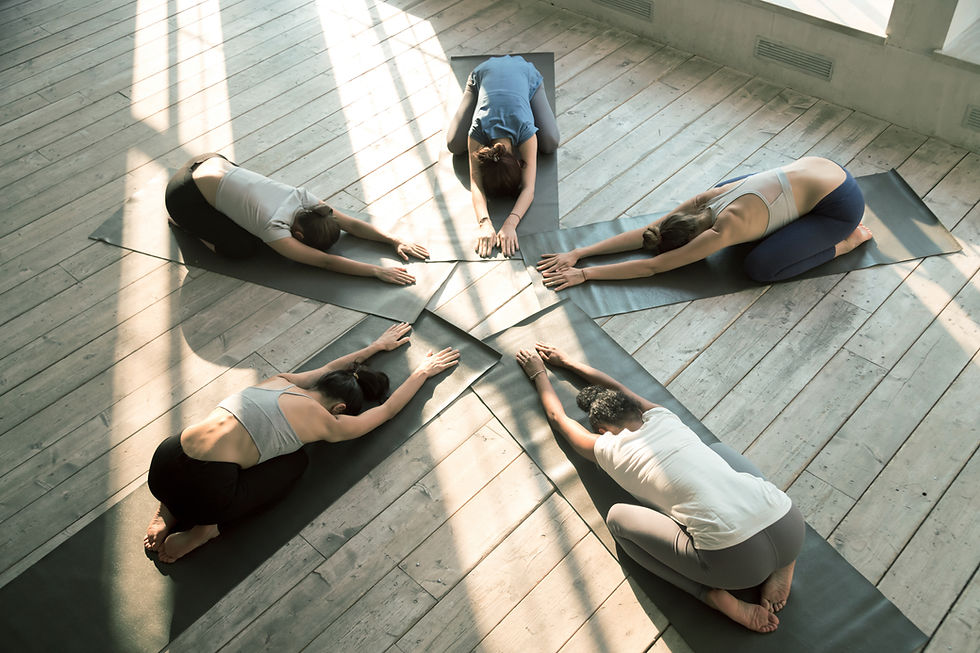Spring into Action: Starting Spring Activities & Sports Without Injury
- morganspecht2
- Apr 23
- 3 min read
Spring is the perfect time to get back into outdoor activities and sports. However, it's essential to approach this transition carefully to avoid injuries. Here are some tips, supported by recent physiotherapy and active rehabilitation studies, to help you enjoy a safe and active spring season.

Warm-Up and Stretching
Before engaging in any physical activity, it's crucial to warm up your muscles. A proper warm-up increases blood flow to the muscles, enhancing flexibility and reducing the risk of injury. Dynamic stretching, which involves moving parts of your body and gradually increasing reach, speed, or both, is particularly effective. According to a study by Gomes et al. (2025), dynamic stretching can significantly improve muscle performance and reduce injury risk (Gomes et al., 2025).
Gradual Progression
Avoid jumping into intense activities right away. Gradually increase the intensity and duration of your workouts. This approach allows your body to adapt and build strength over time. A study by Asik and Sahbaz (2025) highlights the importance of gradual progression in preventing chronic injuries, particularly in activities like running and cycling (Asik & Sahbaz, 2025).
Strength Training
Incorporating strength training into your routine can help build muscle and joint

stability, which is crucial for injury prevention. Strengthening exercises, especially those targeting the core and lower body, can enhance your overall performance and reduce the risk of injuries. Research by Tat et al. (2025) shows that low-frequency physiotherapy focusing on joint health and muscle strength can significantly improve balance and reaction time, reducing the likelihood of injuries (Tat et al., 2025).
Proper Equipment
Using the right equipment is essential for preventing injuries. Ensure that your shoes, protective gear, and other equipment are appropriate for the activity and fit well. Poorly fitting equipment can lead to discomfort and increase the risk of injury.
Listen to Your Body
Pay attention to your body's signals. If you experience pain or discomfort, take a break and assess the situation. Pushing through pain can lead to more severe injuries. A study by Piroch (2024) emphasizes the importance of listening to your body and adjusting your activity levels accordingly to prevent overuse injuries (Piroch, 2024).
Stay Hydrated and Maintain a Balanced Diet
Proper hydration and nutrition play a vital role in maintaining muscle function and overall health. Dehydration can lead to muscle cramps and fatigue, increasing the risk of injury. Ensure you drink plenty of water and consume a balanced diet rich in vitamins and minerals.
If you are looking for help getting started with increasing activity, active rehabilitation, or recovery from an injury- The Leduc Physio team can help! Meet our team and schedule your appointment online (www.leducphysio.ca) or call for more info: (780) 980-5443
References
Asik, H. K., & Sahbaz, T. (2025). Preventing chronic low back pain: Investigating the role of Pilates in subacute management—a randomized controlled trial. Irish Journal of Medical Science. https://doi.org/10.1007/s11845-025-02789-3
Gomes, M., Gonçalves, A., & Mendonca, G. V. (2025). Concurrent training effects on H reflex, V wave and contractile properties of the plantar flexors: Insights into different resistance training types. European Journal of Applied Physiology. https://doi.org/10.1007/s00421-025-04012-6
Piroch, A. (2024). New management of sports-related concussion: Active rehabilitation. Journal of Athletic Training. https://doi.org/10.4085/1062-6050-0245.24
Tat, A. M., Tat, N. M., & Karaman, K. (2025). Low frequency physiotherapy on joint health, hemarthrosis, walking, balance and reaction time in hemophilic arthropathy: A controlled trial. BMC Musculoskeletal Disorders. https://doi.org/10.1186/s12891-025-05987-4




Comments